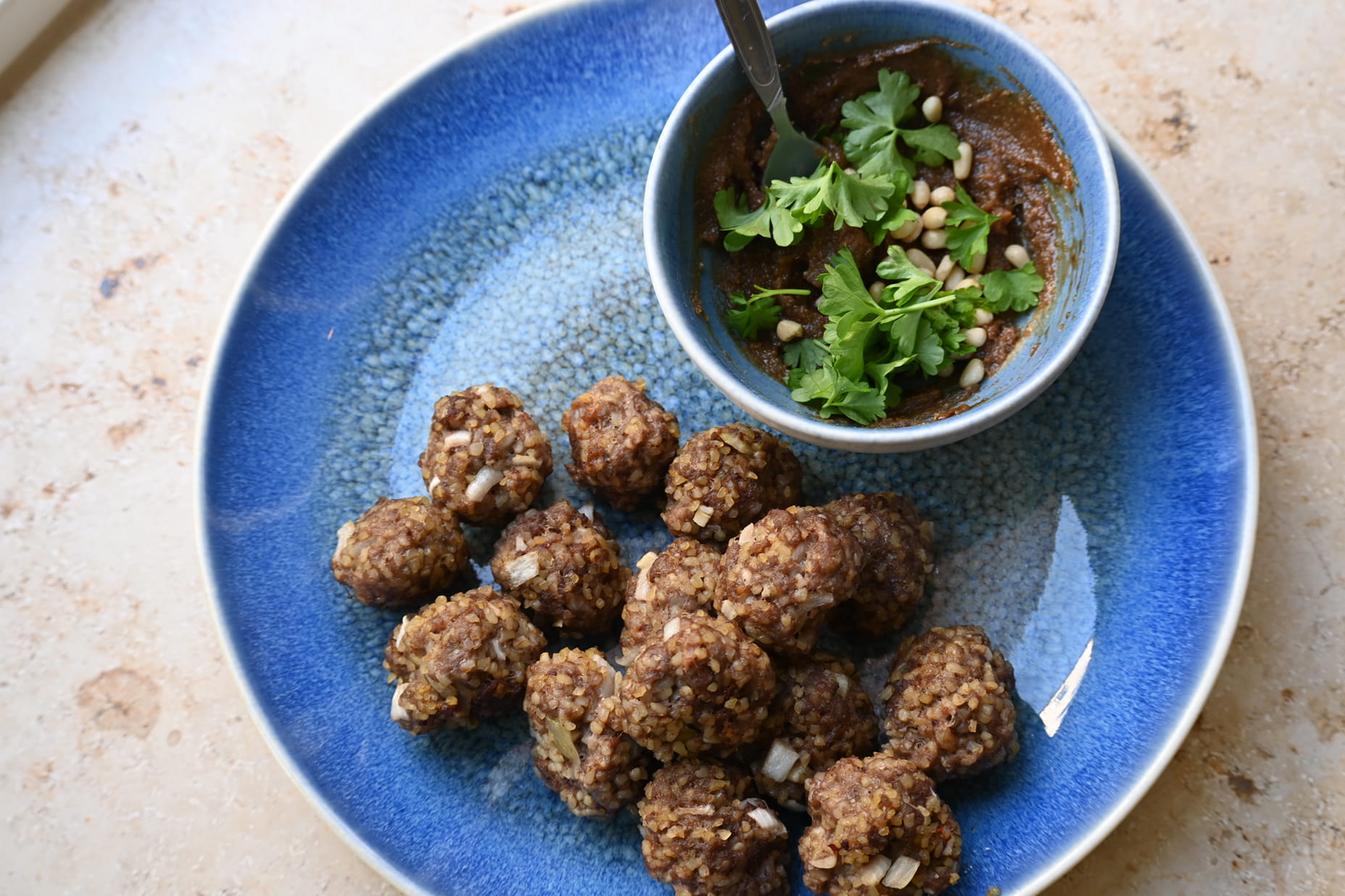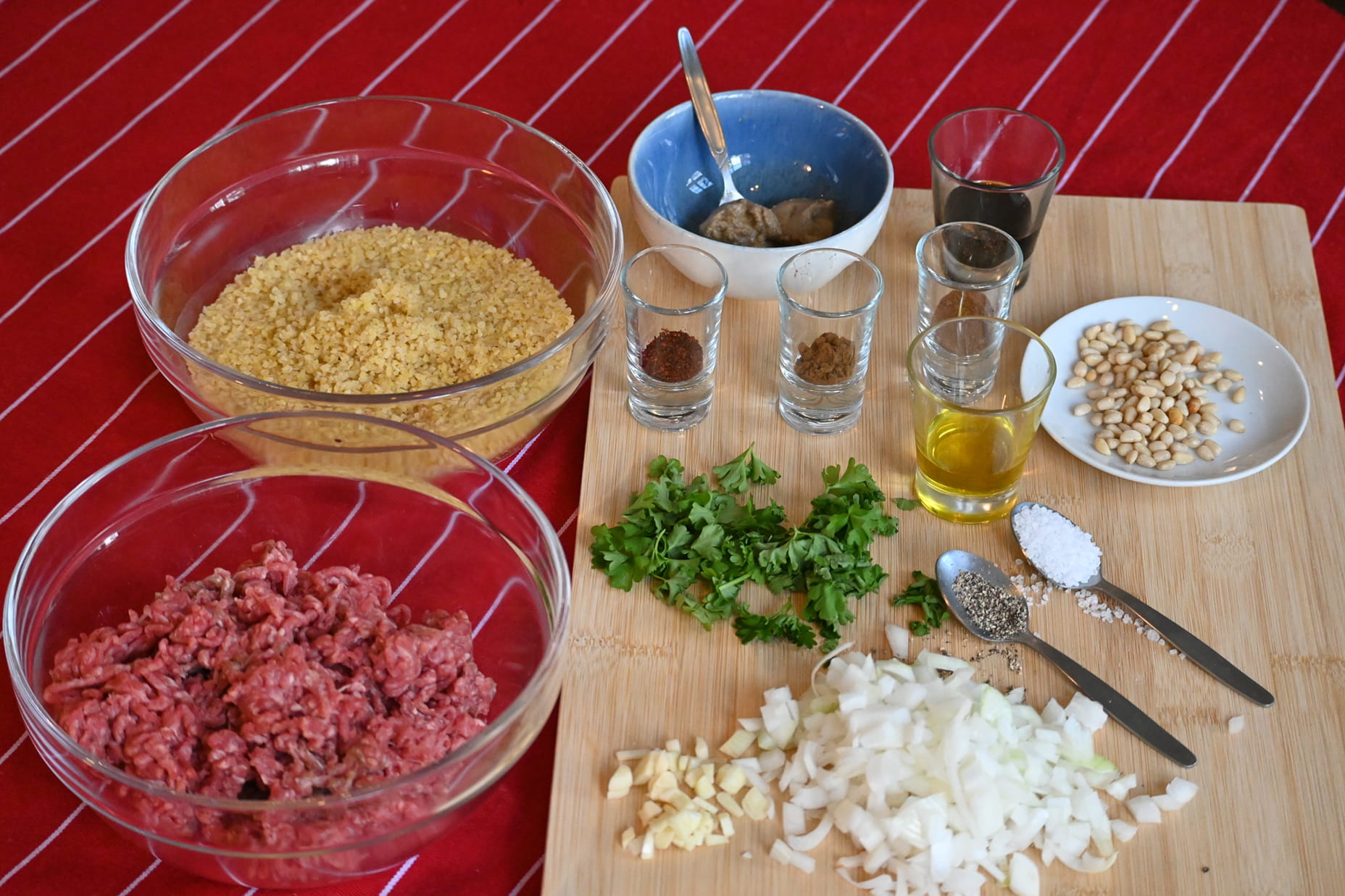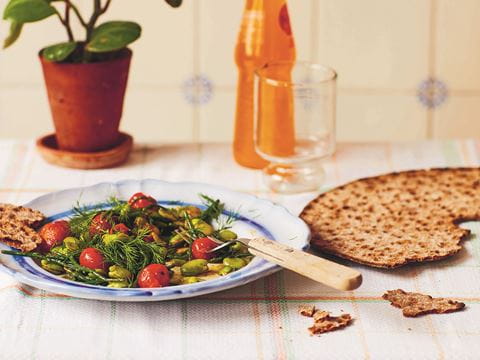
Biting Into the Past: Recreating Gary Nabhan’s Albóndigas Meatball Recipe
What do lamb, pomegranate and a Silk Road secret share? A meatball with a hidden past.
4 min
Written by Dianna Wray
Albóndigas have traveled far. Born as hazelnut-sized lamb meatballs in Arab kitchens, they crossed into the Iberian Peninsula from North Africa with Umayyads in the eighth century CE, voyaged to the Americas with conquistadors and simmered their way into Mexican kitchens. Today they arrive at most tables as comforting orbs bobbing in tomato broth. But in their earliest form, they tasted nothing like what we know now.
This dish’s long-overlooked origin story is one ecologist, ethnobotanist and author Gary Nabhan has spent years uncovering. Albóndigas have carried their story across centuries, weaving through Levantine kitchens, across North Africa and Iberia, and finally to the American Southwest, where echoes of their past still linger. “Meatballs are all over the world,” Nabhan writes, “but lamb meatballs seasoned with parsley, cinnamon, cloves and allspice, or nutmeg and mace, are a special lineage.”
His aim? To re-create albóndigas as they might have tasted when Arabs and Berbers brought them to Spain. Nabhan’s version—with spiced ground lamb and a tart pomegranate dip—bears little resemblance to the comforting albóndigas you’ll find at the table of your Mexican abuela (grandmother) or even in your typical tapas bar in Spain.
The very name, albóndigas, comes from the Arabic al-bunduq, meaning hazelnut, a nod to their original size. According to Arabic food historian Nawal Nasrallah, their roots go back even further: to kofta, popular in ancient Persia and the Middle East. “We don’t know exactly how old they are,” she says, “but recipes begin turning up in some of the oldest Arabic cookbooks.”
When Arabs entered the Iberian Peninsula in 711 CE, they brought hazelnut-shaped meatballs with them. Later, the Spanish adapted the recipe, and in the Americas, tomatoes and chilies transformed it again. “They adapted the recipe based on what they found,” Nasrallah notes. “That’s how these recipes evolve.”
Cooking this dish isn’t just about meatballs. Nabhan’s recipe attempts to reclaim a taste of the past, seasoned with Silk Road spices and paired with the tang of pomegranate molasses. To follow it is to ask: How much of history can we hold in a single bite?
Intrigued, and a devotee of the meatball in all its forms, I decide I must try the recipe. My love of meatballs runs deeper than casual comfort food. They’ve been my companions across cultures: Italian polpette, Swedish köttbullar, Turkish köfte. Each version carries a story, but this one promised something older, almost mythical. Could Nabhan’s lamb albóndigas claim the crown? That question pulls me into the kitchen.
At first, I’m tempted to substitute beef for lamb—ground lamb isn’t easy to find where I live. But Nabhan is clear: It’s not any old meatball,” he tells me. “It’s lamb, not pork or beef.”

Ingredients
Albóndigas: Meatballs With Andalusi-Arabic Traditions
Serves 8, 4-5 per person
For the meatballs
- 2 cups cracked bulghur wheat, presoaked and squeezed dry
- 1 white onion, finely chopped
- ⅓ cup flat parsley leaves, finely chopped
- 3 garlic cloves, finely chopped
- 1 teaspoon ground cinnamon
- 1 teaspoon ground nutmeg and mace or allspice
- 1 teaspoon Aleppo or Chimayo chili powder
- Pinch freshly ground black pepper
- 1 teaspoon fine sea salt
- 1¾ pound ground lamb meat
- 2 teaspoons extra-virgin olive oil
For the sauce
- 3 tablespoons tahini paste
- 2 tablespoons sour pomegranate molasses (honey or carob molasses can be used as a substitute)
- 2 tablespoons lemon juice
- ¼ cup minced parsley
- ¼ cup pine nuts
Instructions
Step One: Prep the Bulgur
Pour the cracked bulgur wheat into a bowl, cover with water and let it soak for a few hours in the fridge. When it’s soft, squeeze out any excess water.
Step Two: Mix the Base
Finely chop the onion, parsley and garlic. Add them to the bulgur along with the cinnamon, nutmeg, chili powder, black pepper and salt. The fragrance of the spices blooms instantly, a reminder that these flavors once traveled the Silk Road.
Step Three: Knead and Roll
Add the ground lamb to the mixture. Using your hands, knead until the ingredients are evenly combined, feeling the grain and meat fold together. Shape the mixture into small balls—hazelnut-sized, echoing the Arabic origin of their name, al-bunduq.
Step Four: Bake
Preheat the oven to 350°F (180°C). Arrange the meatballs on a baking sheet, brush each one with olive oil and bake for 20–25 minutes, until firm and bronzed.
Step Five: Make the Sauce
Combine tahini, pomegranate molasses and lemon juice in a small bowl. Stir until smooth, then garnish with minced parsley and pine nuts.
In that bite my lifelong love of meatballs feels remade. No longer just comfort food, but history folded into lamb and cinnamon.

Arab food historian Nawal Nasrallah
You may also be interested in...

Simple Summer Salad Recipe by Sally Butcher
Food
This recipe serves up one of London-based food writer Sally Butcher's favorite lunches—a perfect mezze dish of beans.
From Sultan’s Kitchen to Delhi’s Streets: Ni‘matnāma Lives On
Food
A sultan’s 500-year-old cookbook still ripples across South Asia, from kitchens to street stalls to celebratory tables, preserving centuries of technique and taste.
How a Quest To Perfect Butter Chicken Rekindled Memories and Heritage
Food
What begins as a lesson in a beloved recipe becomes a journey through diaspora, friendship and the scents that tie us to places we’ve never lived.